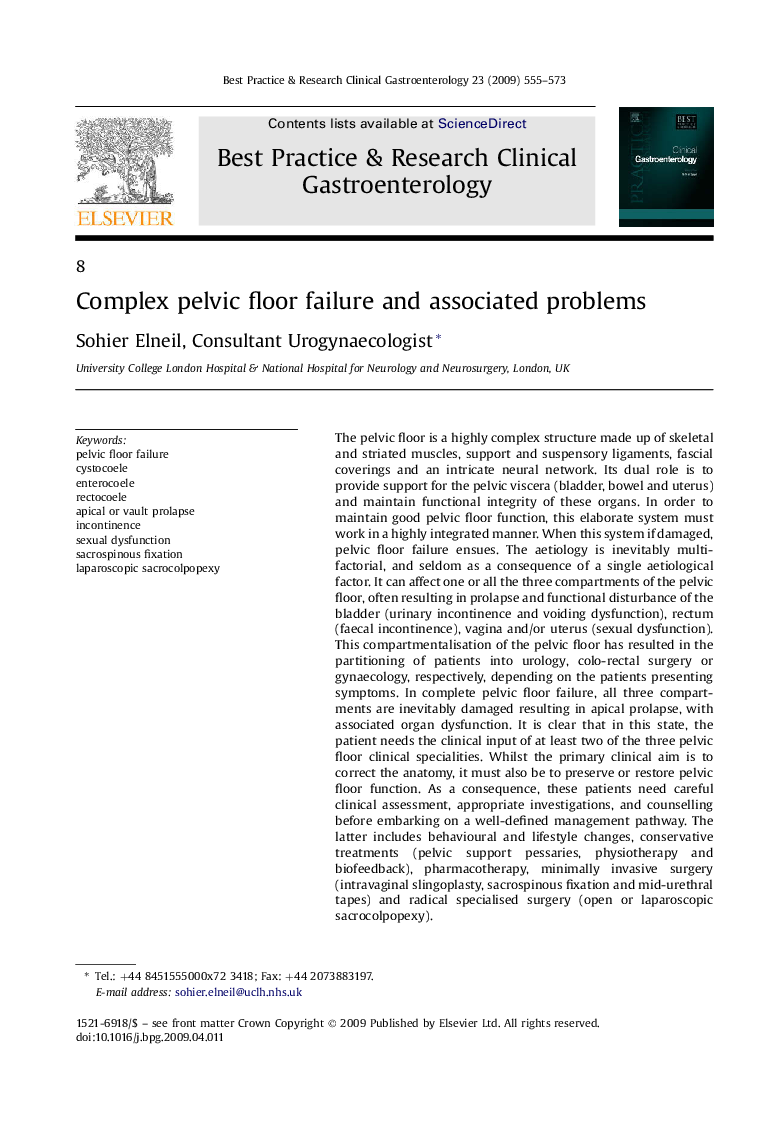| کد مقاله | کد نشریه | سال انتشار | مقاله انگلیسی | نسخه تمام متن |
|---|---|---|---|---|
| 3254558 | 1207210 | 2009 | 19 صفحه PDF | دانلود رایگان |

The pelvic floor is a highly complex structure made up of skeletal and striated muscles, support and suspensory ligaments, fascial coverings and an intricate neural network. Its dual role is to provide support for the pelvic viscera (bladder, bowel and uterus) and maintain functional integrity of these organs. In order to maintain good pelvic floor function, this elaborate system must work in a highly integrated manner. When this system if damaged, pelvic floor failure ensues. The aetiology is inevitably multi-factorial, and seldom as a consequence of a single aetiological factor. It can affect one or all the three compartments of the pelvic floor, often resulting in prolapse and functional disturbance of the bladder (urinary incontinence and voiding dysfunction), rectum (faecal incontinence), vagina and/or uterus (sexual dysfunction). This compartmentalisation of the pelvic floor has resulted in the partitioning of patients into urology, colo-rectal surgery or gynaecology, respectively, depending on the patients presenting symptoms. In complete pelvic floor failure, all three compartments are inevitably damaged resulting in apical prolapse, with associated organ dysfunction. It is clear that in this state, the patient needs the clinical input of at least two of the three pelvic floor clinical specialities. Whilst the primary clinical aim is to correct the anatomy, it must also be to preserve or restore pelvic floor function. As a consequence, these patients need careful clinical assessment, appropriate investigations, and counselling before embarking on a well-defined management pathway. The latter includes behavioural and lifestyle changes, conservative treatments (pelvic support pessaries, physiotherapy and biofeedback), pharmacotherapy, minimally invasive surgery (intravaginal slingoplasty, sacrospinous fixation and mid-urethral tapes) and radical specialised surgery (open or laparoscopic sacrocolpopexy).It is not surprising that in this complex group of patients, a multi-disciplinary approach is not only essential, but also critical, if good clinical care and governance is to be ensured.
Journal: Best Practice & Research Clinical Gastroenterology - Volume 23, Issue 4, August 2009, Pages 555–573